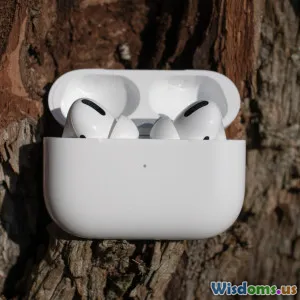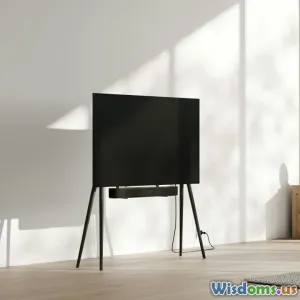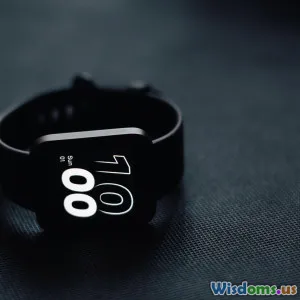
The Rise of Foldable Phones Is It Worth Switching in 2024
11 min read Explore the transformative trend of foldable phones in 2024 and whether upgrading to them offers real benefits. (0 Reviews)
The Rise of Foldable Phones: Is It Worth Switching in 2024?
In the evolving landscape of mobile technology, foldable phones have emerged not just as a novelty but as devices fiercely challenging traditional smartphones. The question many tech enthusiasts and casual users alike are asking in 2024 is whether this futuristic design is worth the switch. This article delves deep into the rise of foldable phones this year, examining technological advancements, user experience, market reception, and future prospects.
Introduction: From Concept to Consumer Reality
Foldable phones once seemed the stuff of science fiction — devices that could transform with a swift hinge, folding from a phone into a tablet-sized screen. Early iterations faced criticism for fragility and high costs, leaving many skeptical. However, recent innovations, coupled with growing consumer interest, have propelled foldable phones into mainstream relevance this year.
Why should you care?
Foldables promise a new paradigm in mobile interaction: a blend of portability and expanded display without lugging multiple devices. As brands like Samsung, Huawei, Xiaomi, and others refine their designs, now becomes the pivotal moment to understand if these devices offer tangible advantages.
The Evolution of Foldable Technology
Early Generations: The Trials and Tribulations
Samsung’s Galaxy Fold, released in 2019, was one of the first major foldable phones. While innovative, it suffered from problems with screen durability and hinge reliability. The first Motorola Razr fold revival met similar criticism for sacrifices in battery life and camera performance.
Breakthrough Innovations in 2024
Fast-forward to 2024, foldable phones have tackled many earlier issues:
- Durability: New ultra-thin glass (UTG) hybrid layers have replaced fragile plastic films, improving scratch resistance.
- Hinge mechanics: Advanced multi-link hinge systems offer smoother folding actions and better protection against dust.
- Display quality: High refresh rates (up to 120Hz) and high resolution on foldable displays now rival flagship smartphones.
- Battery and Performance: Improvements in battery density mean larger foldables can sustain screen-on time comparable to standard phones, powered by top-tier processors like Snapdragon 8 Gen 2.
Real-World Insight
According to Samsung’s VP of Mobile Experience, “Foldables in 2024 no longer represent compromise devices but are future-proof gadgets empowering people’s lifestyles with versatile experiences.” This sentiment aligns with the increasing global sales: IDC reports a projected grow of foldable shipments by 80% in 2024 compared to last year.
Key Benefits of Foldable Phones
1. Enhanced Productivity and Multitasking
The larger, tablet-sized display area of devices like the Samsung Galaxy Z Fold 5 facilitates seamless multitasking. You can run multiple apps side-by-side, improving workflows quickly, especially for professionals and power users.
2. Compact Portability Meets Screen Real Estate
Unlike traditional smartphones or tablets, foldables compact drastically for pocket ease, then unfold for immersive viewing — a boon for media consumption, gaming, or reading documents.
3. Novel User Experiences
The foldable form factor allows for new app layouts, camera use cases (like cover screen photography with the main cameras), and gaming experiences specifically optimized for variable screen dimensions.
4. Cutting-edge Craftsmanship
Owning a foldable is often associated with owning advanced technology and design art. For early adopters and tech aficionados, the allure of innovation is undeniable.
Challenges and Considerations Before Switching
1. Premium Pricing
Foldable phones still command a price premium, often exceeding $1,200 to $1,800, compared to many flagship traditional smartphones priced between $700 to $1,100.
2. Fragility and Long-term Durability
Despite advancements, foldable displays remain more delicate than standard glass screens. Cases and screen protectors are evolving but may not yet match the protective ease of conventional phones.
3. Battery Life Constraints
Large foldable screens can draw more power during use; while battery improvements are notable, they require attention for heavy users.
4. App Optimization
While mainstream apps have been improved for adaptive display use, certain niche or legacy applications might not always fully leverage foldable screen capabilities or experience compatibility quirks.
5. Repair and Servicing Costs
Due to complex construction, repairs on foldable smartphones—especially screen replacements—tend to be costly and less readily available than on conventional phones.
Comparing Top Foldables in 2024
| Device | Display Size (Unfolded) | Price (Approx.) | Unique Feature |
|---|---|---|---|
| Samsung Galaxy Z Fold 5 | 7.6 inches | $1,799 | Under-display camera, S-Pen support |
| Huawei Mate X3 | 8 inches | $1,650 | Outward folding design, 80W charging |
| Xiaomi Mix Fold 3 | 8.03 inches | $1,700 | Leica optimized camera system |
| Oppo Find N2 Flip | 7.1 inches | $1,100 | Compact clamshell format |
The pricing reflects flagship ranges but showcases different design philosophies: inward vs outward folding, tablet-size vs clamshell. Users must weigh what form factor suits their daily habits strongest.
Consumer Perspectives and Adoption Rates
Recent surveys indicate growing public interest:
- A Deloitte survey found 35% of respondents considering foldables as their next upgrade in 2024, up from 20% in 2022.
- Early adopters report heightened satisfaction with multitasking and media appeal.
However, widespread adoption remains cautious due to price and perceived fragility. The hybrid appeal, though, continues to re-engage classic smartphone users and even those who transitioned to tablets.
Future Outlook: Are Foldable Phones the New Standard?
As production scales, costs decrease, and materials improve, foldables could edge closer to a mainstream norm:
- Advances in flexible battery tech might improve power density further.
- Ecosystem development: More app developers will optimize for foldable interfaces.
- Emerging designs: Rollable and stretchable displays may soon complement foldables.
Major brands heavily invest in foldable R&D, signaling deep commitment to foldable devices' success.
Conclusion: Should You Switch to a Foldable Phone in 2024?
Choosing to switch hinges on your priorities:
- If you value expanded screen space without sacrificing pocketability, desire cutting-edge features, and are comfortable with premium pricing, a foldable phone in 2024 offers compelling benefits.
- Conversely, if budget, ruggedness, or straightforward usability is pivotal, traditional smartphones remain a safe, mature option.
In a way, foldable phones represent not just new hardware but a glimpse into mobile computing’s future—merging versatility with innovation. For tech enthusiasts and professionals who crave productivity and uniqueness, switching is well justified. For casual users, waiting a few more years as technologies mature could be prudent.
Whichever route you choose, foldables have undeniably changed the conversation about smartphone design and ambitions in 2024 and beyond.
Author's note: For readers interested in exploring foldable devices, consider visiting physical stores to experience the fold effects firsthand and assess which format aligns best with your lifestyle and work.
References:
- International Data Corporation (IDC) Reports on Foldable Phone Shipments (2024)
- Samsung Official Press Releases and Interviews (2024)
- Deloitte Consumer Technology Survey (Q1 2024)
- Industry analyses from TechInsights and DisplayMate on Foldable Display technologies
Rate the Post
User Reviews
Popular Posts



















